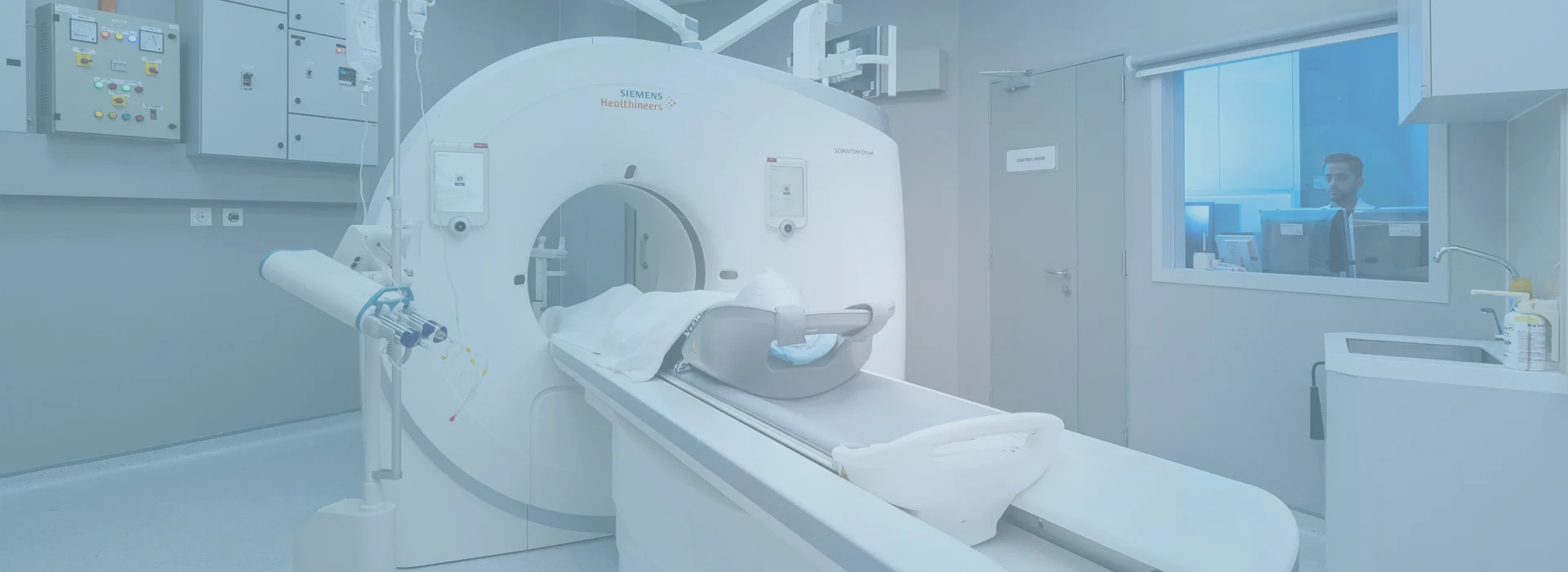
31 Mar Top 7 facts about Coronary Artery Disease (CAD)
Top 7 Facts About Coronary Artery Disease (CAD)
By Island Hospital | March 31, 2025 6:51:41 PM
Coronary Artery Disease, also called CAD, coronary arteriosclerosis, coronary atherosclerosis is the most common type of heart disease.
It is important to learn the basics and know how to manage CAD effectively. Here are the Top 7 facts you should know about Coronary Artery Disease (CAD).
1. What happens to my heart if my coronary arteries are narrowed, hardened, or blocked?
The heart is one of the vital organs in the body which pumps blood to all parts of the body. The heart muscle receives its blood supply via the blood flow through the coronary arteries.
Blood flow is simply restricted or, in some instances, blocked altogether, when there is gradual buildup of material inside the arteries.
The material is made up of cholesterol deposits, called plaque, which causes the inside of the arteries to narrow and harden over time. This process is called Atherosclerosis.
Narrowed arteries may cause reduced circulation of blood around your body. This can cause symptoms such as muscle pain, dizziness and tissue damage as the affected regions are deprived of blood and oxygen.
Over time, if untreated, arteries may harden, thus restricting more blood flow (imagine a clogged water pipe trickling with water).
As such, your heart cannot receive enough oxygenated blood, especially when it beats quickly during physical exertion or stress. This can cause chest pain and shortness of breath.
Clogged-up arteries may eventually result in a decrease in the amount of blood that can flow through your arteries, depending on the percentage of the blockage.
If a blood clot forms and blocks one of these arteries, blood may completely stop flowing any further, and of course, leading to a heart attack.
Such a heart blockage is typically accompanied by major symptoms, and treatment needs to be given in a very timely manner.
Do note that heart attacks in women are different. They tend to develop symptoms of disease at a much later stage than men. Their symptoms are often vague or ‘non-specific’.
2. Who is at risk of Coronary Artery Disease?
Coronary Artery Disease does not only affect older people. In fact, cholesterol deposits (atheromatous plaque) in the heart arteries often progresses slowly, as early as late teens, and goes on for decades.
It accelerates if you:
- smoke
- have an unhealthy diet
- have a family medical history of heart disease
- lack physical activity
In some patients, cholesterol deposits can develop rapidly and as such, some people may get a heart attack from as early as in their early thirties.
More so, for those who have genetically acquired extremely high blood cholesterol levels, also known as familial hypercholesterolemia.
Although men are generally more often at risk at younger ages, occasionally young women can also develop coronary disease.
After menopause, the likelihood of coronary artery disease and heart attacks in women significantly increases.
Therefore it is important that regular health screenings are done to watch your heart disease risk factors.
Discover the truth about heart disease. Read our article debunking common myths: “12 Things I Thought I Knew About Heart Disease – But Are Wrong”.
3. How is Coronary Artery Disease treated?
Treatment for coronary artery disease usually involves lifestyle changes and, if necessary, medications and medical procedures, based on the severity of the blockage.
4. What medications are used to treat Coronary Artery Disease?
Six common types of medications used in treating coronary artery disease include:
1. Cholesterol-lowering drugs
The most common medicine is Statins, which are usually the leading type of drug that doctors prescribe to lower LDL. They also lower triglycerides – another type of blood fat, and mildly raise your “good” (HDL) cholesterol.
2. Aspirin or Clopidogrel
This medicine is used to prevent blood clots forming in hardened blood vessels which can lead to events such as stroke, heart attack, or death.
You may have been prescribed Clopidogrel/Aspirin to help prevent blood clots forming and to reduce the risk of heart attack, stroke or death, because you have suffered a severe type of chest pain called unstable angina, or have had a heart attack.
3. Beta blockers
Beta blockers, also known as beta-adrenergic blocking agents, are medications that reduce your blood pressure. Beta blockers work by blocking the effects of the hormone epinephrine, also known as adrenaline. When you take beta blockers, your heart beats more slowly and with less force, thereby reducing blood pressure.
4. Nitroglycerin
Doctors usually prescribe nitroglycerin for angina pectoris – a sudden heart-related chest pain. It happens because something is preventing the flow of blood to your heart muscle. Nitroglycerin widens the blood vessels so more blood gets to your heart muscle, which will help stop the pain.
5. Calcium channel blockers
Calcium channel blockers prevent calcium from entering cells of the heart and blood vessel walls, resulting in lower blood pressure. It also relaxes and widen blood vessels, it slows your heart rate, which can further reduce blood pressure.
6. Angiotensin-converting enzyme inhibitors (ACE Inhibitors)
Angiotensin-converting enzyme inhibitors (ACE inhibitors) are medications that slow (inhibit) the activity of the enzyme ACE, which decreases the production of angiotensin I, which results in enlarged blood vessels and reduces blood pressure.
What if medications do not work?
This means that your condition is more severe and you may have to undergo a procedure to restore blood flow back to the parts that have suffered a restriction in blood supply. This procedure is called revascularisation. Your doctor may recommend either balloon angioplasty and stenting or Coronary artery bypass grafting (CABG).
Did you know the symptoms of hypertension develop slowly over time? Learn all about the risk factors, complications, treatment, and more in our complete guide to hypertension.
5. Balloon Angioplasty and Stenting
What is balloon angioplasty?
Balloon angioplasty procedure is minimally invasive. It uses a long thin tube called a catheter that has a balloon on its tip to pass through an artery from the groin or arm and into the arteries of the heart.
A small guiding wire is passed through the obstructed part of the artery, and then the small balloon (with the help of the guiding wire) is inflated at the spot of narrowing to compress the plaque against the artery wall.
Angioplasty is also called percutaneous transluminal coronary angioplasty (PTCA).
In the majority of the cases, a small stent is positioned in the artery to keep it from narrowing again.
What is a stent that is used in balloon angioplasty?
A stent is a small, mesh-like device made of metal. Think of it as a wire tube. When a stent is placed inside of a coronary artery, it keeps the artery from narrowing again by acting as a support device.
By keeping the vessel open, the stent improves blood flow to the heart muscle and reduces the pain of angina.
Stent procedures are usually used along with balloon angioplasty. 80% of patients who have balloon angioplasty will also have a stent put in place.
The stent may be plain, drug-coated, or a drug time-released stent (eluting stent). The type to be used depends on the patient’s individual situation.
6. Coronary Artery Bypass Grafting (CABG): An Overview
Coronary artery bypass grafting (CABG) is more commonly called open-heart surgery. It is a type of surgery that improves blood flow to the heart, and is done on people who have very severe coronary artery disease (CAD) with several blocked arteries.
During the Coronary artery bypass grafting (CABG) surgery, a detour is created for the blood to go around the blockage using a short piece of blood vessel (either a vein or artery) which is taken from some other parts of the body and placed onto the heart muscle, away from the obstruction.
Blood will then flow through the new vessel to nourish the heart, bypassing the blockage. Imagine a traffic obstruction, whereby traffic is rerouted to ease traffic congestion.
Similarly, in this surgery, CABG surgery creates new routes around narrowed and blocked arteries, allowing sufficient blood flow to deliver oxygen and nutrients to the heart muscle.
The number of bypass grafts performed depends on how many arteries are blocked and the feasibility to graft.
As CABG surgery is a major operation, it is only recommended for selected groups of patients with significant narrowings and blockages of the heart arteries.
However, it is still best to seek the advice of a cardiologist to openly discuss your condition and treatment options thoroughly before making any decision.
7. There is no cure for Coronary Artery Disease
It is a chronic disease and at present there is no cure. The disease progresses with time and the rate of progression to severe disease depends on how well you control the risk factors with diet, exercise, medications and lifestyle changes.
Do not be under the wrong impression that after bypass surgery or balloon angioplasty, that you are 100% cured and free from coronary artery disease.
The truth is, plaque will still continue to build up in your arteries. However, you can control the rate of its progression by sticking to your doctor’s advice and medications.
Take Charge of Your Heart Health Today!
At Island Hospital, we understand the importance of comprehensive heart care.
Our Cardiology Department and Heart Centre are equipped with advanced technology and staffed by a dedicated team of professional cardiologists, nurses, and support staff.
We have access to the latest imaging and blood tests that provide accurate assessments of: heart disease risk before you develop noticeable symptoms AND how severe your condition is.
Our expert team works with you to identify the best treatment and prevention strategies that suit your needs.
Our commitment to excellence has earned us local and worldwide recognition:
- A finalist for Malaysia’s Flagship Medical Tourism Hospital Programme
- A place on Newsweek’s lists of World’s Best Hospitals 2024
- A place Best Specialized Hospitals Asia Pacific 2024 (Cardiology)
Hence, whether you are seeking preventive care, diagnostic services, or advanced treatments for heart-related conditions, Island Hospital is your trusted partner in achieving optimal cardiovascular health.
Don’t Wait Until It’s Too Late – Get a Screening That Covers All The Bases

We’re offering our comprehensive Executive Health Screening Package at only RM760 – giving you a complete head-to-toe health assessment for peace of mind.
Our package features vital health screenings, including Cardiovascular Assessment, Full Blood Picture, Radiological Screening, Diabetes Screening, Kidney Function Test, and much more.
What’s Included in Your Screening Experience:
✔ Physical examination
✔ Complete medical report
✔ Consultation by Health Screening Physician/Specialist
✔ Choice of light refreshments
✔ Exclusive Island Hospital woven bag




![[IH 2025] #33 ECG Test_Image 1 medical-machine-ecg-test](https://islandhospital.com/wp-content/uploads/2025/07/IH-2025-33-ECG-Test_Image-1-600x400.png)

